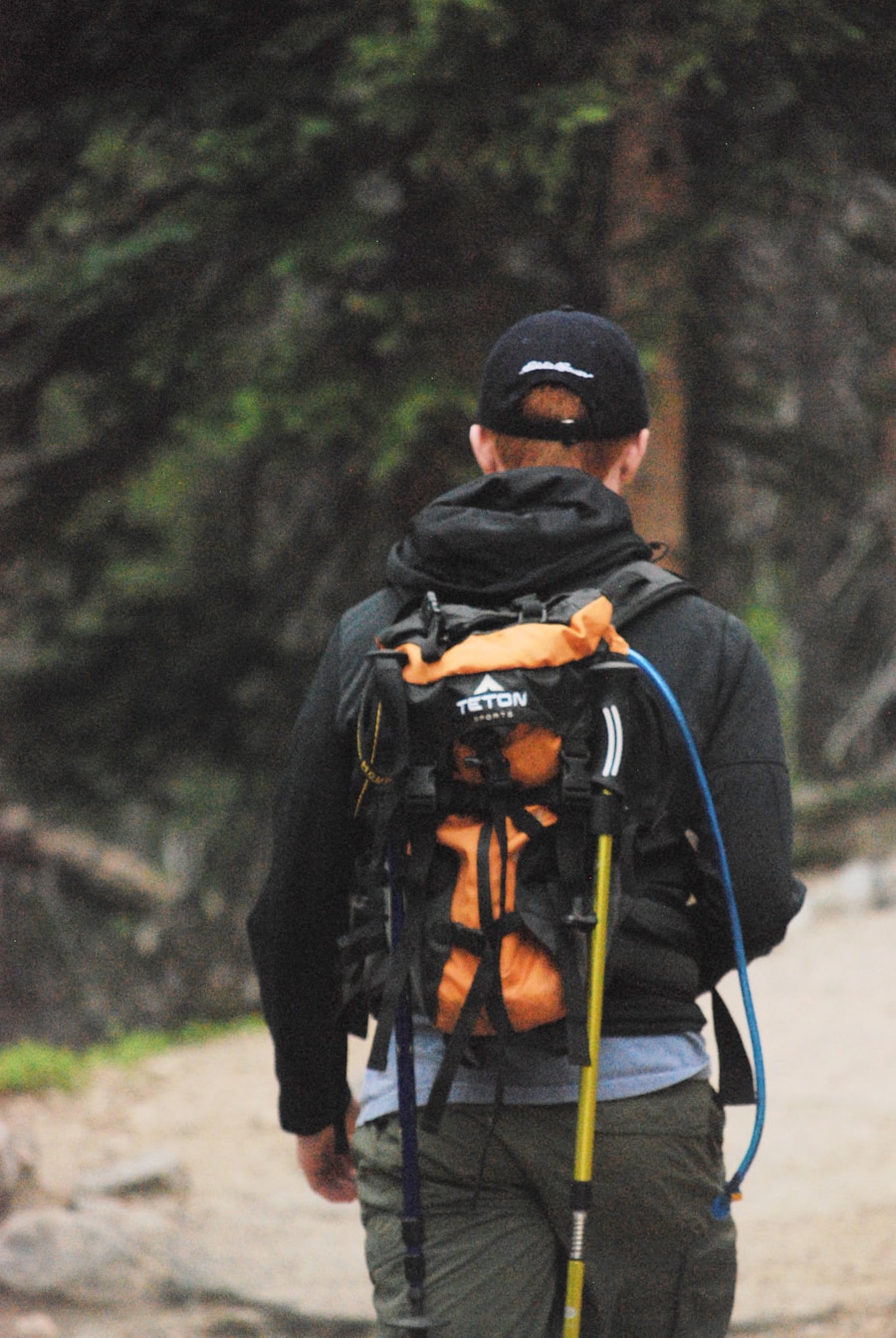Selecting the appropriate footwear is one of the most critical decisions a hiker can make. The right shoes or boots can significantly enhance comfort, stability, and overall hiking experience. When considering footwear, it is essential to evaluate the terrain you will be traversing.
For instance, if your hike involves rocky paths or steep inclines, a sturdy pair of hiking boots with good ankle support is advisable. These boots typically feature rugged soles designed to provide traction on uneven surfaces, reducing the risk of slips and falls. Brands like Merrell and Salomon offer a variety of options that cater to different hiking conditions, ensuring that your feet remain protected and comfortable throughout your journey.
In addition to terrain considerations, the fit of the footwear is paramount. Ill-fitting shoes can lead to blisters, calluses, and other foot ailments that can ruin a hiking trip. It is recommended to try on hiking boots with the socks you plan to wear on the trail, as this can affect the fit.
A good rule of thumb is to ensure there is enough room in the toe box for your toes to wiggle freely while still providing a snug fit around the heel to prevent slippage. Furthermore, consider the weight of the footwear; lighter shoes may be more comfortable for long distances, while heavier boots may offer more protection and support for challenging hikes. Ultimately, investing time in selecting the right footwear can make a significant difference in your hiking experience.
Key Takeaways
- Choose footwear that is comfortable, provides good support, and is appropriate for the terrain and weather conditions.
- Layer clothing to regulate body temperature and protect against the elements, including a moisture-wicking base layer, insulating mid-layer, and waterproof outer layer.
- Pack essential items such as a map, compass, first aid kit, emergency shelter, and enough food and water for the hike.
- Protect yourself from the elements by wearing sunscreen, sunglasses, a hat, and insect repellent, and be prepared for changes in weather.
- Carry navigational tools such as a map and compass, and safety equipment such as a whistle and flashlight, and stay hydrated and fueled with water and high-energy snacks.
Layering for Comfort and Protection
Base Layer: Moisture-Wicking Materials
The base layer, which is worn closest to the skin, should be made from moisture-wicking materials such as merino wool or synthetic fabrics. These materials help to draw sweat away from the body, keeping you dry and comfortable during physical exertion. For example, a lightweight merino wool shirt can provide warmth without overheating, making it an excellent choice for various temperatures.
Insulating Layer: Retaining Body Heat
The insulating layer serves to retain body heat and can be made from materials like fleece or down. This layer is crucial for cooler conditions, as it traps warmth while still allowing moisture to escape. A fleece jacket is a versatile option that can be easily added or removed depending on the temperature fluctuations encountered on the trail.
Outer Shell: Protection from the Elements
Finally, the outer shell layer protects against wind, rain, and snow. Waterproof and breathable jackets made from materials like Gore-Tex are ideal for keeping you dry while allowing sweat to evaporate. By employing this layering strategy, hikers can effectively manage their body temperature and stay comfortable regardless of the weather conditions they face.
Packing the Essential Backpack

When preparing for a hike, packing your backpack efficiently is essential for both comfort and accessibility. A well-organized backpack not only distributes weight evenly but also ensures that you can easily access your gear when needed. Start by selecting a backpack that suits the length of your hike; day hikes typically require a smaller pack (20-30 liters), while multi-day treks may necessitate larger packs (50 liters or more).
Look for features such as padded shoulder straps, a hip belt for weight distribution, and multiple compartments for organization. Once you have chosen your backpack, consider how to pack it strategically. Heavier items should be placed close to your back and at the bottom of the pack to maintain balance and stability.
Lighter items can be stored at the top or in external pockets for easy access. It’s also wise to keep frequently used items—such as snacks, maps, or first aid supplies—in outer pockets or at the top of your pack. Additionally, utilizing packing cubes or dry bags can help keep your gear organized and protected from moisture.
By taking the time to pack thoughtfully, you can enhance your hiking experience by ensuring that everything you need is within reach when you need it.
Protecting Yourself from the Elements
| Element | Protection Method | Effectiveness |
|---|---|---|
| Sun | Applying sunscreen with SPF 30 or higher | Blocks 97% of UVB rays |
| Rain | Waterproof jacket or umbrella | Keeps you dry and prevents hypothermia |
| Wind | Windproof clothing and scarf | Reduces wind chill and prevents frostbite |
| Cold | Layered clothing and insulated gloves | Retains body heat and prevents hypothermia |
Outdoor adventures often expose hikers to various environmental elements that can impact their safety and enjoyment. Sun exposure is one of the most significant concerns; prolonged exposure can lead to sunburn and increase the risk of skin cancer over time. To protect yourself from harmful UV rays, wearing a wide-brimmed hat and UV-blocking sunglasses is essential.
Additionally, applying a broad-spectrum sunscreen with an SPF of at least 30 on all exposed skin should be part of your pre-hike routine. Reapplying sunscreen every two hours or after swimming or sweating is crucial for maintaining protection. In addition to sun protection, being prepared for rain or cold weather is vital for a safe hiking experience.
Waterproof gear such as jackets and pants can shield you from rain while allowing moisture from sweat to escape. Investing in high-quality rain gear made from breathable materials will keep you dry without causing overheating. For colder conditions, layering with thermal clothing and insulated gloves will help maintain body heat.
Furthermore, it’s wise to check weather forecasts before heading out; being aware of potential storms or temperature drops can help you prepare adequately and avoid dangerous situations.
Navigational Tools and Safety Equipment
Navigating unfamiliar trails requires reliable tools and equipment to ensure safety and prevent getting lost. A topographic map of the area is an invaluable resource that provides detailed information about terrain features, elevation changes, and potential hazards. Familiarizing yourself with map reading skills is essential; understanding how to interpret symbols and contour lines can significantly enhance your ability to navigate effectively.
In addition to traditional maps, a GPS device or smartphone app can provide real-time location tracking and route planning capabilities. Safety equipment should also be part of your hiking essentials. A whistle can be a lifesaver in emergencies; its sound carries much farther than a voice, making it easier for rescuers to locate you if needed.
A multi-tool or knife can serve various purposes, from preparing food to making emergency repairs on gear. Additionally, carrying a headlamp or flashlight ensures visibility during low-light conditions or emergencies after dark. By equipping yourself with navigational tools and safety equipment, you enhance your preparedness for any situation that may arise on the trail.
Hydration and Nutrition on the Trails

Maintaining proper hydration and nutrition during hikes is crucial for sustaining energy levels and overall well-being. Dehydration can lead to fatigue, dizziness, and impaired cognitive function, making it essential to drink water regularly throughout your hike. A general guideline is to consume about half a liter of water per hour during moderate activity; however, this may vary based on individual needs and environmental conditions such as heat or altitude.
Carrying a hydration reservoir or water bottles that are easily accessible will encourage regular sipping rather than waiting until thirst sets in. In terms of nutrition, packing lightweight snacks that provide quick energy boosts is vital for long hikes. Foods rich in carbohydrates—such as energy bars, trail mix with nuts and dried fruits, or jerky—are excellent choices for maintaining energy levels without weighing down your pack.
It’s also beneficial to include some protein-rich snacks to help with muscle recovery during breaks. Planning meals ahead of time for longer hikes ensures that you have balanced nutrition throughout your journey; consider options like dehydrated meals that only require hot water for preparation. By prioritizing hydration and nutrition on the trails, hikers can enhance their endurance and enjoyment.
Essential First Aid Supplies
Accidents can happen even on well-planned hikes; therefore, carrying a first aid kit tailored to outdoor activities is essential for addressing minor injuries promptly. A basic first aid kit should include adhesive bandages in various sizes for cuts and blisters, antiseptic wipes for cleaning wounds, gauze pads for larger injuries, and medical tape for securing dressings. Additionally, including pain relievers such as ibuprofen or acetaminophen can help manage discomfort during your hike.
Beyond basic supplies, consider adding items specific to hiking-related injuries. For instance, blister prevention products like moleskin or blister pads are invaluable for long treks where foot friction may occur. An emergency blanket can provide warmth in case of sudden weather changes or injuries that require immobilization until help arrives.
It’s also wise to familiarize yourself with basic first aid techniques; knowing how to treat common injuries such as sprains or heat exhaustion can make a significant difference in emergency situations on the trail.
Other Considerations for a Safe and Enjoyable Hike
While gear selection and preparation are crucial components of hiking safety, other considerations also play a significant role in ensuring an enjoyable experience on the trails. One important aspect is understanding trail etiquette; respecting fellow hikers by yielding the right of way on narrow paths and keeping noise levels down contributes to a positive atmosphere in nature. Additionally, adhering to Leave No Trace principles—such as packing out all trash and minimizing campfire impact—helps preserve natural environments for future generations.
Another consideration is understanding your physical limits and choosing hikes that match your fitness level and experience. Overestimating one’s abilities can lead to exhaustion or injury; therefore, it’s wise to start with shorter trails before progressing to more challenging hikes. Moreover, hiking with a buddy or group enhances safety through shared experiences and support in case of emergencies.
By taking these additional factors into account—ranging from etiquette to personal fitness—hikers can create memorable experiences while prioritizing safety in their outdoor adventures.
When preparing for a hiking trip, it’s important to consider what you wear to ensure comfort and safety on the trails. In addition to proper footwear and layers, having the right gear can make a big difference in your overall experience. For families looking to explore the great outdoors together, a double stroller can be a game-changer. Check out this article on the best double stroller for travel to find the perfect option for your next adventure.
Love travel? Join Our Facebook Community For More Tips.
FAQs
What should I wear for hiking?
When going hiking, it’s important to wear moisture-wicking and breathable clothing. This includes a moisture-wicking base layer, a comfortable and durable shirt, hiking pants or shorts, and a waterproof and windproof jacket. It’s also important to wear sturdy and supportive hiking boots or shoes.
What type of socks should I wear for hiking?
For hiking, it’s best to wear moisture-wicking and cushioned socks that provide support and prevent blisters. Merino wool or synthetic materials are good options for hiking socks.
What accessories should I bring for hiking?
Some essential accessories to bring for hiking include a sun hat, sunglasses, sunscreen, a backpack with water and snacks, a map and compass or GPS device, a first aid kit, and insect repellent. Depending on the weather and terrain, you may also need gloves, a beanie, or gaiters.
What should I avoid wearing for hiking?
When hiking, it’s best to avoid wearing cotton clothing as it retains moisture and can lead to chafing and discomfort. It’s also important to avoid wearing inappropriate footwear such as flip-flops or sandals, as they do not provide adequate support and protection for hiking.
